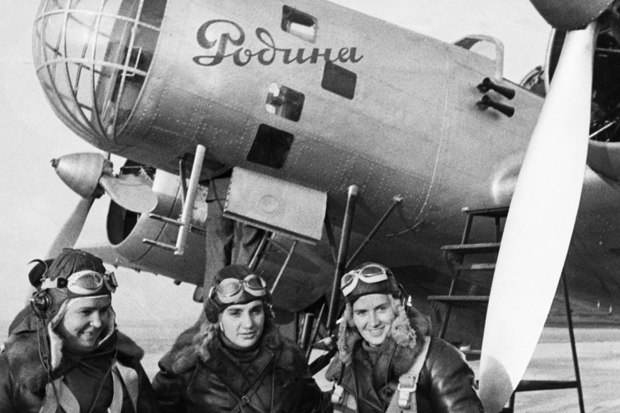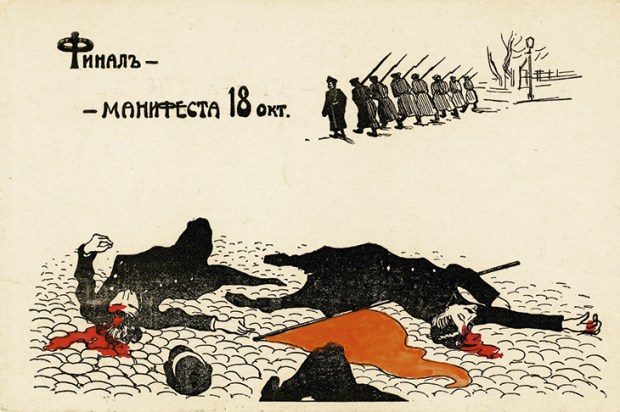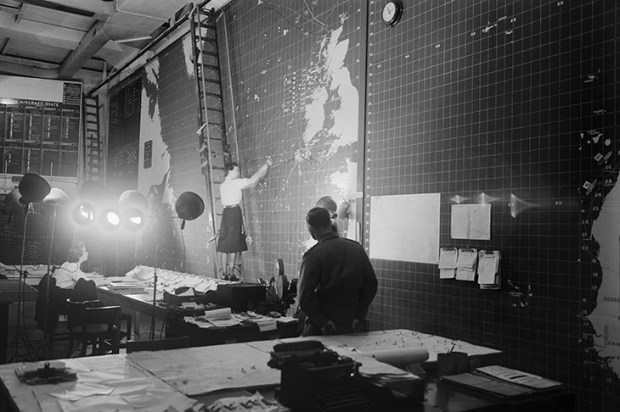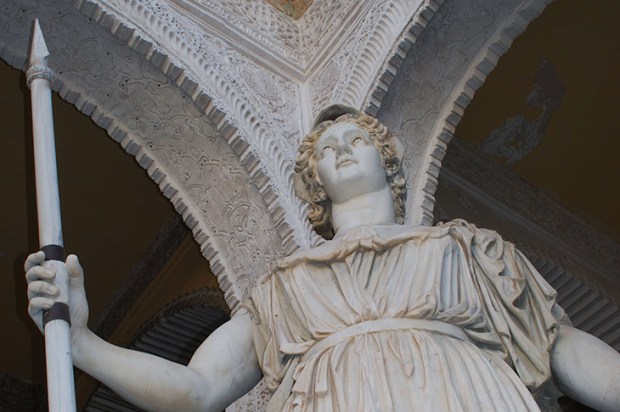The name Lyuba Vinogradova may not ring any bells, but her ferrety eye for spotting a telling detail may already have impressed you. As Antony Beevor generously acknowledges in his introduction to this book, her work as his researcher in various archives played an important role in the creation of his triumphant Russian histories; she has also assisted Simon Sebag Montefiore and Max Hastings, among others. Here she brings to light the fascinating story of the world’s first and only all-female aviation regiments.
As German troops advanced towards Moscow in 1941, the celebrated aviatrix Marina Raskova determined to form three ‘women’s regiments’: fighters, night bombers and long-distance bombers. The glamorous Raskova was a heroine in the USSR following a record-breaking flight that crashed in the Siberian taiga, leaving her to survive for ten days on a single bar of chocolate. In a grim Soviet twist, she also turns out to have been a secret police officer who sent many to their deaths just months before war broke out. Thousands of members of the Soviet air force, as well as the other armed services, were repressed in 1940 — one reason why the Wehrmacht made such swift progress.
Young women from all over the country hurried to respond to their idol Raskova’s appeal for volunteers. Many were trained already, thanks to the flying clubs attached to dozens of factories which gave even the poorest the opportunity to fly. Katya Budanova, one of the best-known pilots of the war, was a village girl who had been sent out to work aged nine. Others flocked to be the regiments’ navigators, mechanics and armourers.
‘At that time,’ writes Vinogradova, ‘all occupations were open to women,’ and Soviet girls took pride in proving themselves the equals of men on construction sites and in the tunnels of the new Moscow metro as well as in the skies. Attitudes to women, however, had not kept pace with state ideology. Raskova’s ‘dollies’, as they were nicknamed, were teased and mocked, particularly when first kitted out in absurdly ill-fitting men’s uniforms. In one comic scene, a political officer (the much-hated snoop attached to every regiment) complained of ‘the particular difficulty of indoctrinating women’ when an exhausted girl, sick of his propaganda talk, invited him to ‘nip in under her blanket’. Even battle-hardened pilots found themselves grounded because their commanding officers thought the situation too dangerous for women. There was a ‘shared perception of feminine weakness’ that Katya Budanova and her friend Lilya Litvyak countered by ‘refusing to be fussed over and declining all acts of consideration’.
The new recruits, many of whom had been flying instructors before the war, had little trouble learning to handle the temperamental Pe-2 dive bombers, or the Yak-2 fighters with which they brought down dozens of German Messerschmitts. Perhaps the most extraordinary feats, however, were performed by the night bombers, known as ‘night witches’ by the Germans. In their flimsy little U-2 planes with 100-horsepower engines and bodies built of plywood and percale linen, they would cross the front line, engines off, and glide silently above the sleeping enemy. The navigator carried a flare bomb in her lap which she tossed overboard to illuminate the target just before they dropped their payload. With only enough fuel to last an hour in the air, they would sometimes carry out four sorties in a night, repeatedly landing to refuel with their rudimentary night-flight equipment. The damage they caused to Nazi positions and morale was considerable.
There was a propaganda advantage, of course, in these femmes fatales, and Lilya Litvyak, the ‘White Rose of Stalingrad’, became a celebrity in 1943. Like many of the other girls, she sewed her own dresses out of parachute silk and even trimmed them with the viscose from gunpowder bags in anti-aircraft shells. Such frivolity was disapproved of by po-faced political officers, but the women’s regiments seized every opportunity to dance, listen to music and fall in love. Goodness knows, many of them had little enough time left to enjoy themselves. By 1943 the Soviet air force achieved a measure of air superiority against the retreating Germans, although not without huge losses. One by one, the pilots and navigators whom Vinogradova has brought so vividly to life went down. The cruellest fate befell Litvyak, the White Rose, whose body has never been found, but whose family suffered for decades from the absurd rumour of her defection.
Marina Raskova’s motto was ‘We can do anything!’ The women of her regiments certainly fulfilled her faith. Not for the first time, one can’t help being flabbergasted by the heroic achievements of the poverty-stricken and hounded peoples of the USSR. Imagine what Russia would be capable of with a reasonable government!
Got something to add? Join the discussion and comment below.
Get 10 issues for just $10
Subscribe to The Spectator Australia today for the next 10 magazine issues, plus full online access, for just $10.
Available from the Spectator Bookshop, £16 Tel: 08430 600033
You might disagree with half of it, but you’ll enjoy reading all of it. Try your first month for free, then just $2 a week for the remainder of your first year.














Comments
Don't miss out
Join the conversation with other Spectator Australia readers. Subscribe to leave a comment.
SUBSCRIBEAlready a subscriber? Log in